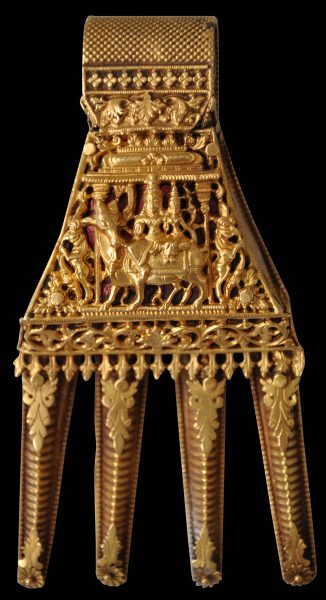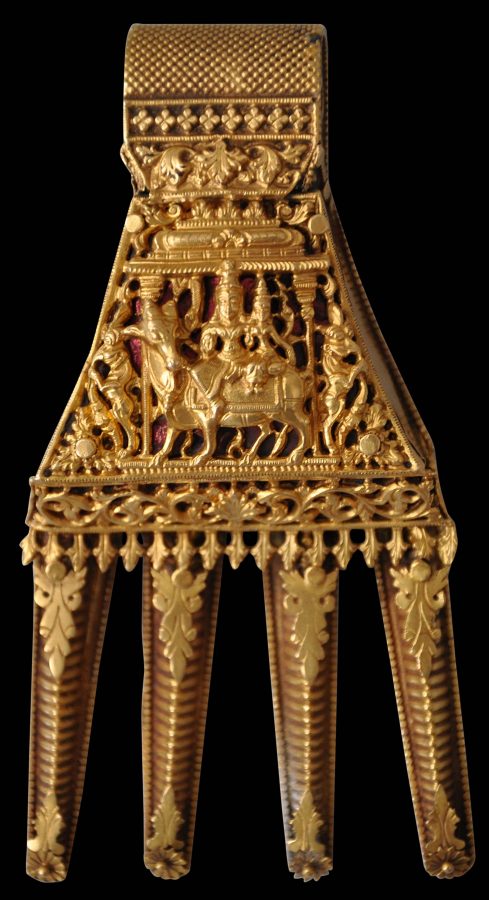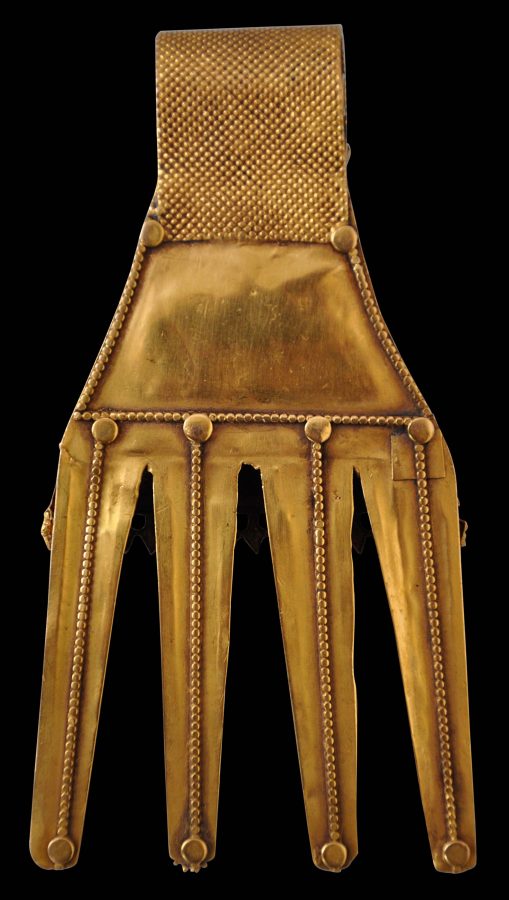This gold pendant is repoussed and pierced and shows a central figure of Shiva and Parvati seated on their bull vahana, Nandi. The details are very fine. A thin sheet of copper enamelled red has been placed behind the pierce front-piece providing a pleasing contrast with the gold.
The pendant has four striking ribbed finger-like finials attached from its base. The top of the pendant curves over and is embellished with a big sweep of fine, applied spheres to emulate weaving work.
Such pendants were worn as part of an extravagant gold necklace and used by the wealthy Nattukottai Chettiar community of Tamil Nadu in south India. Such necklaces were commissioned by Chettiar families and given to their daughters on the occasion of their marriage. The necklaces were both decorative and talismanic. But they were also a store of wealth that were the property of the bride and hers alone giving her a degree of financial security if needed.
Marriage necklaces were a feature of many communities across India, but those of the Tamil Nadu Nattukottai Chettiars were the most spectacular.
The pendant dates to the late nineteenth century. It is in perfect condition.
For related examples, see the front cover illustration of Barnard (2008), the front cover illustration of Aiken (2004), Mattet (2005, p. 140), and Utracht (1997, p. 168).
References
Aitken, M.E., When Gold Blossoms: Indian Jewelry from the Susan L. Beningson Collection, Asia Society & Philip Wilson Publishers, 2004.
Barnard, N., Indian Jewellery, V&A Publishing, 2008.
Mattet, L. (ed.), Icons in Gold: Jewelry of India from the Collection of the Musee Barbier-Muller, Somogy Art Publishers, 2005.
Untracht, O., Traditional Jewelry of India, Thames & Hudson, 1997.





